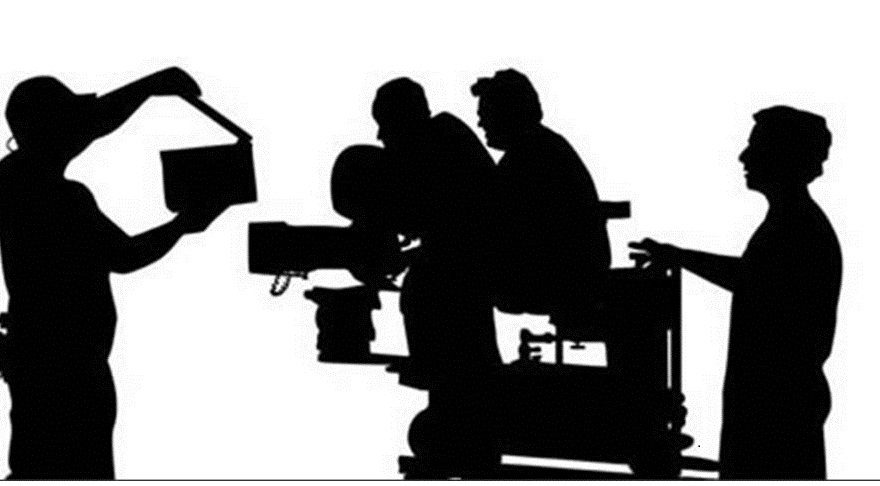
BY ADDISALEM MULAT
In the contemporary world where artistic and innovative aspects are dramatically surging, exploiting the power and ability of picture taking or video recording at the expected standard has to be the call of the day.
The Ethiopian infant cinema industry needs to rise attaching due emphases to the very requirements and professional prerequisites with a view to pushing the sector to the next level of success and make it competent with that of other nations of the world.
Taking this into account, this writer has had a short stay with instructor, cinematographer, researcher, and other things of a similar kind Nebiyu Zebene, in furtherance of familiarizing our esteemed readers with the level of county’s film industry and the way forward. Excerpts:
What is cinematography?
In the first instance, the word cinematography comes from two Greek words Kinema and graphein. The former one means movement and the latter one to record. Cinematography means the art and technology of motion picture photography or the art of visual story telling. In another way, it is the techniques of film photography incorporating both the shooting and development of film.
In a similar vein, cinematography takes a wide spectrum of performances such as the lighting of the set, the high-quality of cameras, lenses, filters, the camera angle and arrangements, and more of the same into consideration. It goes without saying, as cinematography is not an overnight process, it cannot be mastered without a hitch. To put it briefly, mastering the profession needs passing through multifarious hustle and bustle in view of the fact that it amalgamates a vast topic.
In a related move, cinematographers need to understand an assortment of techniques about camera position, camera angle, camera level and other things of a similar kind. Among other things, the profession requires comprehending the nuts and bolts of the various types of cameras. If one fails to do so, they cannot attain accomplishment.
Devoid of the fundamental experience of composition and scene construction, one can plot scenes bringing visual language into play without problems. They should learn how quite a lot of shots act in concert to form a clear integrated description and how to unify each shot in a way that is pictorially charming for onlookers.
When it comes to video, how one frames subjects, standpoint from which they are observed, movement of their actions, their distance from the camera and more of the same play a major role. If we do not manage to do, we end up with producing unusable footage which is displeasing to the eye. We may even come up with producing absolutely a different story that entirely deviates from the message we would like to convey.
What are the duties and responsibilities of a cinematographer?
To start with, a cinematographer is the person in charge of producing the look of a film. Needless to say, a cinematographer works with lightening and camera squad with the intention of making a director’s dream real and putting ideas and concepts which may not be taken into account by the director into effect.
Cinematographers give the kiss of life to a director’s vision making use of their artistic eye, inventiveness, methodological expertise and the like. More often than not, they work with the camera and lighting team with the purpose of making certain the camera is capturing the desired goal of the director.
While on the subject, professional director of photography knows the nuts and bolts of catapulting director’s vision. In fact, cinematographers work closely with directors, production designers, and what have you and go along with location managers as they rummage around for scenes to film.
How do you evaluate the current level of the cinema industry in Ethiopia?
According to my way of thinking, by watching the various types of Ethiopian films one can easily comprehend where our film industry is. Notwithstanding the fact that professionals pull out all the stops to get to the bottom of the predicaments revolving around the Ethiopian film industry, they could not achieve the looked-for goal at the earliest possible time. In a similar manner, as it is not an overnight process, passing through many ups downs is inescapable.
Without any exaggeration, according to my lights, getting ourselves on the right track is not is not a cakewalk. It needs hard work and determination. On the basis thereof, I would even go so far as to say, a lot remains to be done. As things stand at present, the industry is still in its infancy. The industry could hardly be pushed to the next level of accomplishment, taking its present context into consideration, at the earliest possible moment. In simply terms, a long journey remains to be trekked to help the industry robust.
Sad as it may sound, following the film qualities of the country; the total number of film watchers has been declining on numerous occasions. In the present climate, the number of film watchers in multifaceted cinema houses of the country does not surpass ten for the reason that the general public has been losing interest. This is really heartbreaking. For the sake of truth, this was not the case in the past.
To my mind, unless we give priority to film making materials and professionals who know the nitty-gritty of the discipline and provide the sector with the prestige it deserves, we cannot make our dream become a reality in the short amount of time. We cannot move one step forward. People who get themselves in the film making should be assigned based on merit, professional competence, skills, and knowledge the subject matter. The very thing that needs to be taken into consideration in this regard is people who do not have ample wisdom and knowledge should not be engaged in running cinema oriented activities.
What is your take on the evolution of Ethiopian Film industry?
At the start, Ethiopia managed to produce its first long feature film in the 1960’s entitled, “Who is the father of Hirut?” It was an attention-grabbing film that consists of a wide spectrum of elements under its umbrella. In point of fact, the whole lot was not moving the right direction despite some challenges that cannot be expressed in a few words. I dare say, quite a lot of mind-blowing films were able to see the light of day. Furthermore, most of them were conveying a range of societal messages that touch upon and reflect the real facet of the lives of the general public.
But most of the films that came into effect after the1990’s do not hold water as some of them fail to reflect the existing reality on the ground. It turns out that, the industry is twenty or so years old. It is very young.
Honestly speaking, there are a wide spectrum of films that attract the minds and souls of every Tom, Dick, and Harry at the drop of a hat. But the envisioned target has not been achieved yet. Instead of broadening the horizon of the general public, most filmmakers do not place emphasis on broadening the horizon of the public at large. They spoil societal appetite through disseminating non-appealing films. I am not blaming all the films since there are quite exceptional ones.
What should be done to move forward the Ethiopian film industry in leaps and bounds?
From my personal standpoint, all stakeholders should work hand-in-glove for the love of taking the country’s film industry to the expected level. Other than that whenever film watchers bump into films that barely satisfy their need, they should refrain from watching the latter. Besides, the right person must be assigned at the right place in the film making process. Since the industry has been seriously baffled by the spontaneous way of producing scene and acting beyond the call of their duties, stringent measures haveto be taken to pave the leeway through which nonprofessionals and laymen are cast.
THE ETHIOPIAN HERALD JULY 21/2021





